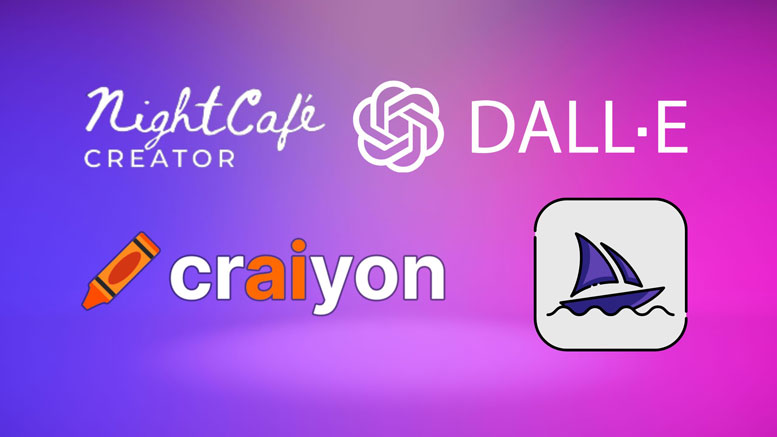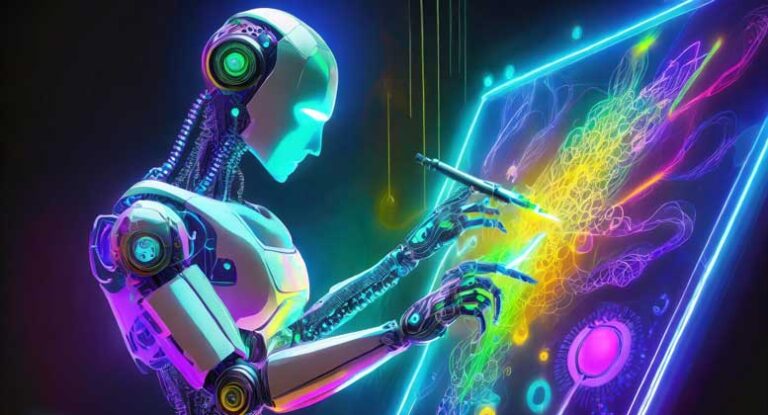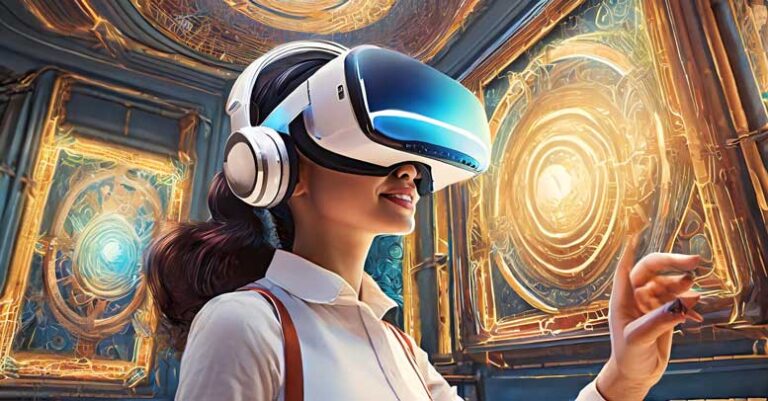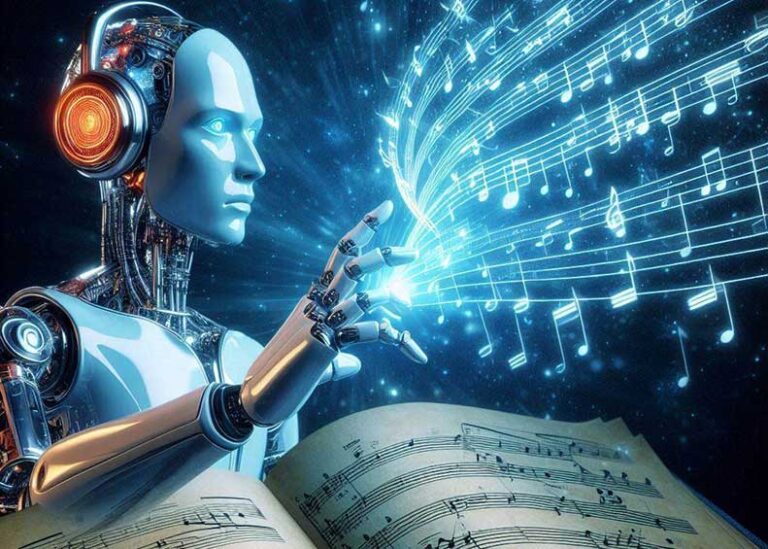Exploring the Fascinating World of AI Image Generators
Table of Contents
An AI image generator is a tool that uses artificial intelligence to create images based on your descriptions or prompts.
Imagine conjuring fantastical landscapes from mere words, transforming your scribbled sketches into vibrant paintings, or generating unique visuals to enhance your design projects.
This is the captivating potential of AI Image Generators, where imagination transcends limitations and pixels dance to your command.
This comprehensive guide delves into the inner workings, potential impact, and exciting future of these revolutionary tools, empowering you to explore the boundless possibilities of AI-driven creativity.
AI Image Generators: What are they?
AI Image Generators are not your average editing tools or filters.
They leverage sophisticated machine learning algorithms trained on vast datasets of images and their corresponding textual descriptions.
By analyzing this intricate language-image connection, these tools can translate your textual prompts into entirely new, and often photorealistic, visuals.
Forget stock photos or limited editing options; AI Image Generators unlock a universe of unique creations tailored to your specific vision.
How do they work?
The magic behind AI Image Generators unfolds in several steps:
1. Input: You provide a clear and concise textual description of your desired image, detailing elements, style, composition, and mood. The more precise your description, the better the AI can understand your vision.
2. Analysis: The AI analyzes your text, identifying key concepts, objects, and visual relationships. It extracts meaning from your words and understands the context of your request.
3. Image Generation: Based on its training data, the AI selects and combines visual elements to create a unique image that aligns with your description. This involves accessing a vast internal library of visual information and applying complex algorithms to manipulate and combine those elements.
4. Refinement: The generated image is refined to ensure coherence, quality, and adherence to your stylistic preferences. The AI may make adjustments to lighting, textures, and overall composition to create a visually pleasing and consistent image.
5. Output: Witness your vision brought to life as a brand new image, ready to be downloaded, shared, or further edited. You can now use this AI-generated creation for your personal or professional projects.
The complexity of these processes varies depending on the specific tool.
Some generate basic sketches, while others produce detailed and nuanced artworks, even incorporating elements of specific artistic styles or historical periods.
Examples of AI Image Generators
To truly appreciate the versatility of AI Image Generators, let’s explore some real-world examples:

- DALL-E 2: Developed by OpenAI, this powerful tool is known for its photorealistic and detailed outputs, ideal for creating high-quality imagery for professional projects.
- Midjourney: Beloved for its artistic capabilities and diverse styles, from anime to Van Gogh-inspired creations, it excels at generating artistic and visually striking images.
- NightCafe Creator: Offering various filters and artistic styles, it’s perfect for exploring different aesthetics and generating unique visuals for personal projects or social media content.
- Craiyon (formerly DALL-E mini): A user-friendly option for generating quick sketches based on simple text prompts, it’s a great starting point for exploring the possibilities of AI image generation.
- Stable Diffusion: A deep learning model that can generate high-quality images based on textual descriptions. This means you can type in what you imagine, and the model will create a visual representation, often in a photorealistic style.
- GauGAN2: Allows transforming simple sketches into realistic landscape paintings, blurring the lines between human and AI creation. This showcases the potential of AI to assist and augment human creativity in artistic endeavors.
This is just a glimpse into the ever-expanding landscape of AI Image Generators, each offering unique features and capabilities to explore.
Impact on society: Reshaping industries and igniting creativity
The rise of AI Image Generators presents a significant impact on society, influencing various sectors and individuals:
- Creative Industries: Designers, artists, and illustrators can use these tools to explore new ideas, generate variations, and expedite their creative workflow, ultimately leading to more innovative and diverse creative outputs.
- Entertainment and Media: From concept art for movies to personalized book covers, AI image generation is revolutionizing the visual narrative landscape, creating captivating and engaging visuals that enhance storytelling experiences.
- Social Media and Communication: Engaging visuals created by AI tools can enhance online presence and communication, making content more eye-catching and relatable, leading to more effective communication and engagement.
- Accessibility and Democratization of Creativity: Even individuals with limited artistic skills can now create unique visuals, opening doors to self-expression and exploration, fostering a more inclusive and diverse creative landscape.
However, it’s crucial to acknowledge potential challenges:
- Copyright and Ownership: Determining ownership of AI-generated images and potential copyright infringement requires clear ethical guidelines and legal frameworks to ensure fair attribution and responsible use.
- Overreliance and the Role of Human Artists: While AI tools offer valuable assistance, overreliance can hinder the development of human artistic skills and creativity. Striking a balance between leveraging AI and preserving human creative expression is essential.
- Bias and Discrimination: Implementing mitigation strategies like diverse training datasets and human oversight is crucial to avoid perpetuating harmful stereotypes or biases in AI-generated images.
- Increased realism and detail: Expect even more photorealistic and nuanced outputs, blurring the lines between AI-generated and real images.
- Integration with other AI tools: Seamless integration with other creative AI tools like text-to-video generators or music composers for immersive multimedia experiences.
- Personalization and user-specific models: Tools that learn from individual preferences and past creations to generate increasingly tailored outputs.
- Focus on ethical development and responsible use: Continued efforts to mitigate bias, ensure transparency, and promote responsible development of this powerful technology.
Ethical considerations on the use of AI Image Generators
As with any powerful technology, responsible development and ethical considerations are crucial for AI Image Generators. Here are some key points:
- Transparency and User Education: Users should be aware of the technology’s limitations, potential biases, and ethical considerations to ensure informed and responsible use.
- Data Collection and Usage: Training data should be diverse and representative to avoid perpetuating harmful stereotypes or biases in generated images. Clear guidelines on data collection and usage are necessary.
- Clear Guidelines on Ownership and Attribution: Clear legal frameworks surrounding ownership and attribution of AI-generated images are essential to ensure fair and responsible use.
Future of AI Image Generators: A canvas painted with endless possibilities
The future of AI Image Generators brims with exciting possibilities:
- Advanced Image Generation Techniques: Imagine tools that incorporate 3D elements, realistic lighting and textures, or even generate moving images based on textual descriptions.
- Integration with Other AI Tools: Seamless integration with text-to-video generators, music composers, or writing assistants could lead to the creation of multimedia experiences or interactive narratives.
- Personalization and Customization: Tools that tailor image generation to individual preferences, learning from user feedback and past creations to refine future outputs.
- Educational Applications: Using AI Image Generators in classrooms to visualize historical events, enhance science learning, or spark creative writing exercises.
However, addressing ethical concerns remains crucial.
Continued dialogue and collaboration between developers, artists, technologists, and users will ensure responsible development and harness the power of AI Image Generators for the benefit of artistic expression, creative exploration, and responsible innovation.
FAQs: Dive Deeper into the World of AI Image Generators
What are the benefits of using AI Image Generators?
- Sparking creativity and exploring new ideas: Generate visuals you could never imagine yourself drawing or painting.
- Boosting productivity and efficiency: Expedite creative workflows and explore variations quickly.
- Creating engaging content for social media and communication: Stand out with unique and eye-catching visuals.
What-s the difference between AI Image Generators and AI Art Generators?
While the terms AI Art Generators and AI Image Generators are often used interchangeably, there are some subtle distinctions between them:
- AI Art Generators: Typically encompass a broader range of outputs, including abstract, conceptual, and experimental images beyond just realistic representations. They often prioritize artistic expression and exploration of new visual territories, venturing into dreamlike landscapes, impossible shapes, and other non-conventional forms.
- AI Image Generators: Their focus is creating more specific and detail-oriented images based on textual descriptions. These typically aim for photorealistic or stylized illustrations that adhere to the user’s vision, representing real-world objects, landscapes, characters, or scenes.
Are AI-generated images copyrighted?
The legal landscape surrounding ownership of AI-generated images is evolving. Check the tool’s terms of service and consult legal advice for commercial use.
Can I sell AI-generated images?
Some tools restrict commercial use, while others allow it with specific licensing terms. Ensure compliance with the platform’s terms and copyright laws.
How can I get started with AI Image Generators?
Several free and paid options exist. Explore user reviews, compare features, and choose a tool that aligns with your needs and budget.
What are the limitations of AI Image Generators?
- Quality and consistency: While some tools produce impressive results, others may struggle with complex scenes, textures, or lighting. Consistency can also vary, requiring experimentation to achieve desired outcomes.
- Limited understanding of context: AI relies on training data, which may not always capture subtle nuances or cultural references. This can lead to misinterpretations or inaccurate outputs.
- Creative control and artistic expression: While users provide prompts, the AI ultimately creates the image, limiting complete creative control. Balancing user input with AI interpretation is key.
What are some specific use cases for AI Image Generators?
- Concept art and design exploration: Generate quick sketches or variations of ideas for product design, marketing materials, or game development.
- Social media and content creation: Create eye-catching visuals for blog posts, social media ads, or presentations.
- Personalized gifts and keepsakes: Generate unique portraits, landscapes, or illustrations based on personal preferences or memories.
- Education and learning: Visualize historical events, scientific concepts, or literary characters to enhance understanding and engagement.
- Accessibility tools for individuals with limited artistic skills: Express oneself visually and explore creative ideas without needing traditional artistic training.
What are the potential risks of using AI Image Generators?
- Deepfakes and misinformation: AI can be used to create realistic but fake images or videos, potentially spreading misinformation or damaging reputations.
- Bias and discrimination: If training data is biased, AI outputs can perpetuate harmful stereotypes or discriminatory content.
- Overdependence on AI and the decline of human creativity: Overreliance on AI tools could hinder the development of human artistic skills and critical thinking.






